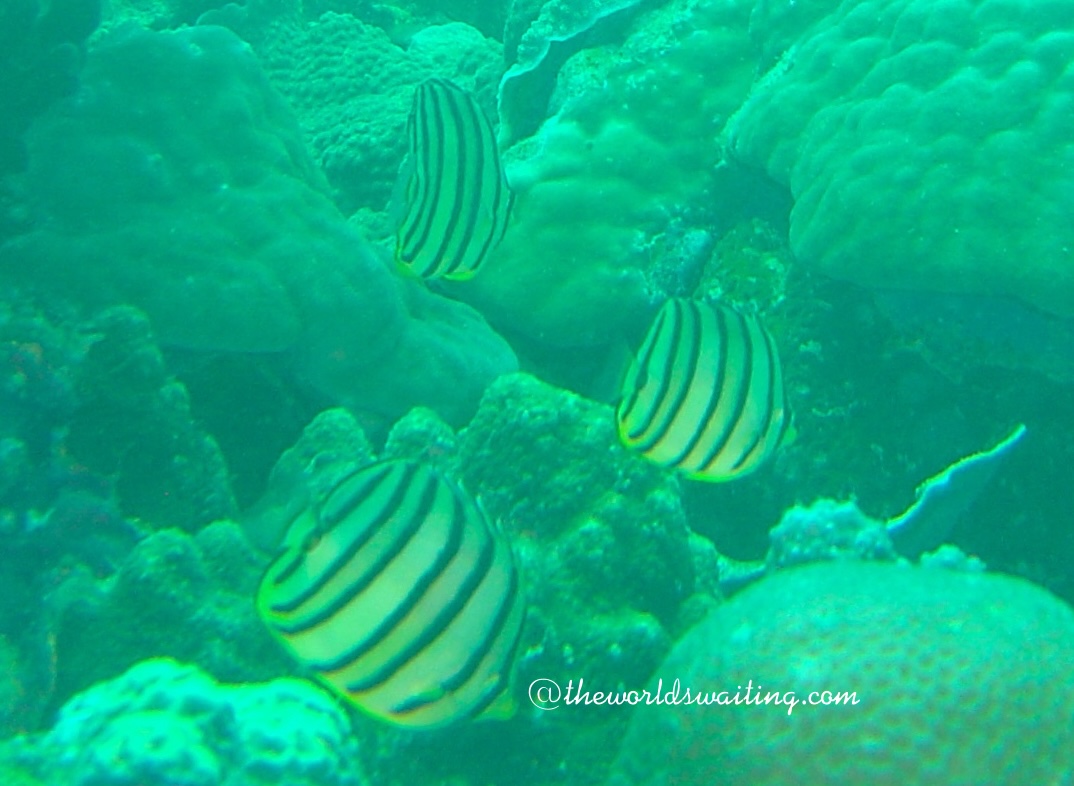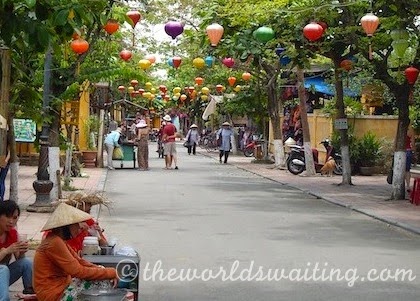
Scuba Diving in Boracay, Philippines
Part of what made diving from Boracay Island in the Philippines so exciting was that it was the off-season and tremendously windy (gusty really) on the side of the island most of the dive centres were on. With absolute faith in what I was being told about great diving being available somewhere else I signed up.
Getting ready
The first interesting point of the adventure was being given a men’s wetsuit to wear. When I asked for a women’s wetsuit I was told ‘this one will fit you’. As a suitably female-shaped diver I knew this was going to be one of those baggy wetsuit experiences. I donned the wetsuit and grabbed the rest of my gear.

Getting to the dive site
The dive guide similarly trussed up like a Christmas tree with all his equipment hanging limply off him (while, I enviously noticed, wearing a wetsuit that fitted him) rallied a group of us and marched off. We kept up through the shopping mall and up the back streets to the island’s main road where we were put in a tricycle. I felt a bit self-conscious wandering the streets dressed for diving, still nobody seemed to care.
The tricycle delivered us to Bulubog beach on the opposite side of the island and as I waded into the water I realized how still it was. There was no wind and only the most half-hearted of waves lapping at my ankles. I thought how incredible White Beach must look with this weather instead of the current howling gale. We clambered aboard a traditional Filipino long boat, assembled our SCUBA units and headed out to the reef. A swift backward roll later and we were on Tulubhan Reef, which I got the impression was the only place suitable for diving at that time of year, but since it was a large reef had plenty to keep us occupied.

Scuba diving in Boracay
At depths ranging from 25 metres to around 14 metres the reef system looked pretty healthy. I saw a lot of hard and soft corals, sponges, seaworms, blennies and a plethora of reef fish, including my favourites Lionfish and Masked Pufferfish. (I always find the would-be bandits of the sea amusing).

Moorish Idols, Angelfish, Anemonefish, Damsels and Trunkfish cruised around too. I was impressed with the variety of small critters and the overall health of the reef, which was not far offshore, but disappointed not to have seen anything larger like turtles, rays or sharks.

Making our return journey via tricycle (including games of how many soggy divers can we squeeze on one tricycle) could have been as awkward as the outward journey because, although we were now more accustomed to wandering around in poorly-fitted wetsuits, we had that attractive post-dive look of wild salty hair and, on some of my dive buddies, mask pressure rings around the eyes. However on walking past a shop with this interesting concept of diver fashion in the window I immediately felt better.
Travelling off season in Boracay
When the diving from Boracay in the off-season was that good I was gutted not to have been there in peak season as the locals told me all the best dive sites were on the south-west side of the island. Oh well, it’s a good reason to return.
Boracay is a bone-shaped island that runs from north-west to south-east. Peak season on the island is Amihan, when the wind comes from the north-east, from November to May. The rest of the year is Habagat when the wind comes from the south-west and it rains more. For the best diving go during Amihan.
Have you dived in the Philippines? Where did you dive and what did you think?




